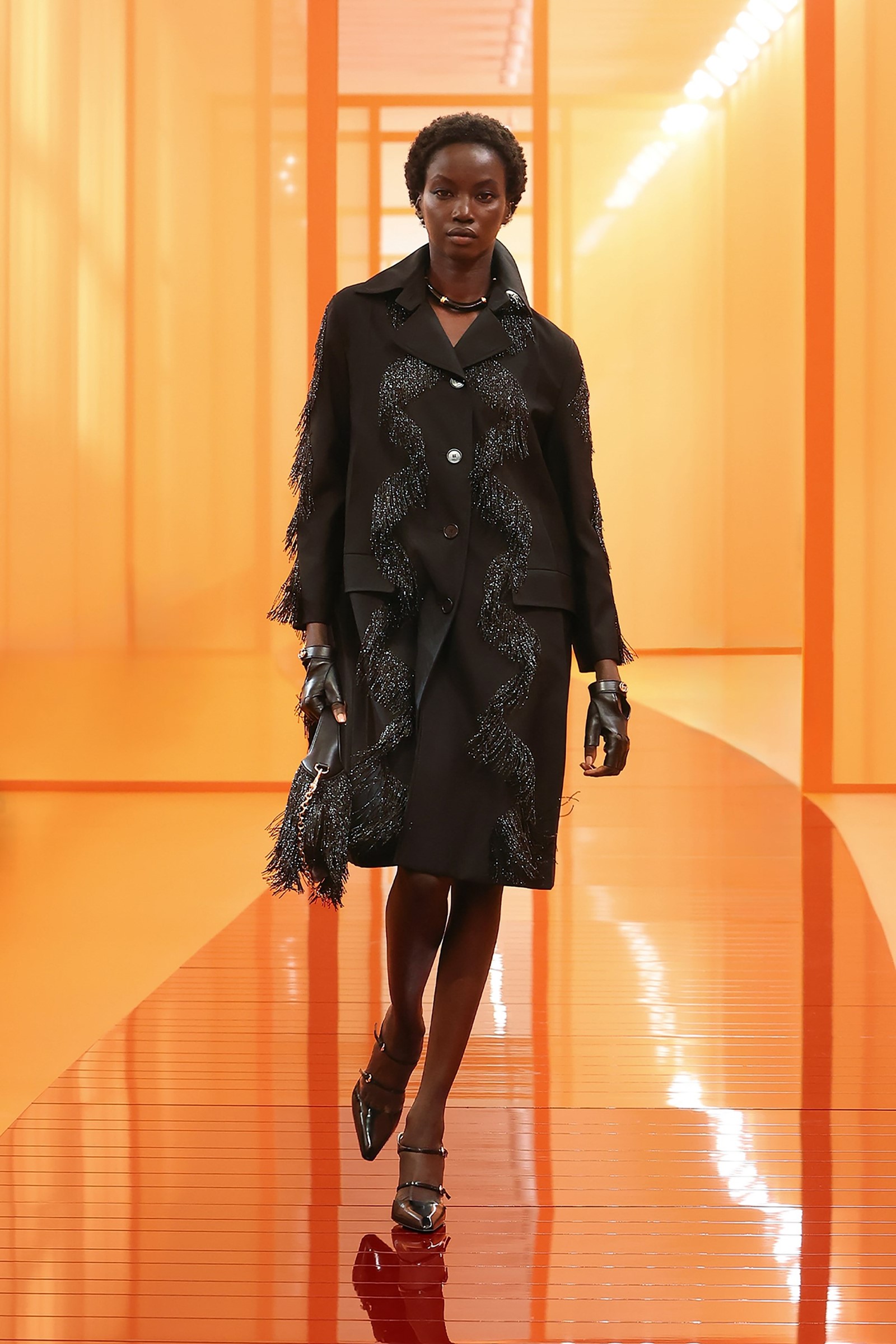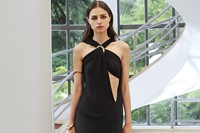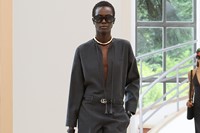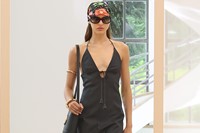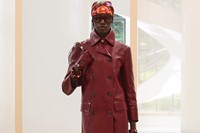What is Gucci? It’s an interesting take, given that for umpteen years Gucci was primarily known for its valigeria – that is, luxury luggage. By 2024, it has plenty more baggage – its mid-20th-century reinvention as outfitter of choice for the jet set, Tom Ford’s spectacular brand revival in the 1990s, and its current position as one of the five largest luxury houses in the world, never mind a nod to a horsey fantasy of a past inspired by Guccio Gucci’s time in London that occasionally rears its equine head.
Sabato de Sarno has made it part of his role to excavate Gucci’s archives and undercover what the house means – in part, to celebrate its heritage, but also to push what it could mean in future. “Tireless exploration,” he called it. But not fruitless. He’s in the process of reinventing Gucci – his boldest stake thus far has been to extract the deep Rosso from Gucci’s webbing strap, title it Ancora and then – appropriately enough – use it to anchor Gucci, recolouring the labels, the bags, and many of the clothes. It gives an immediate visual hit, Gucci without words.
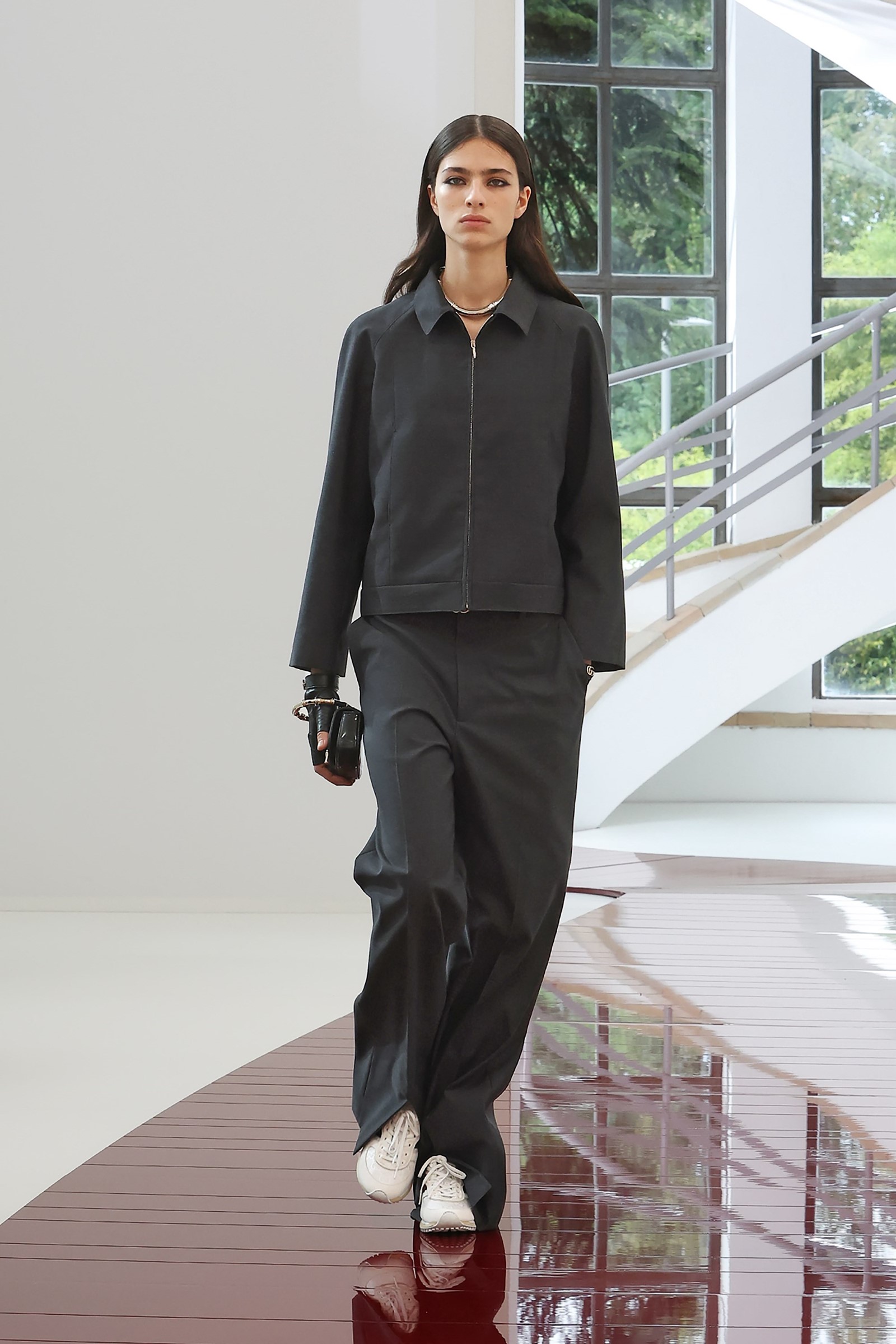
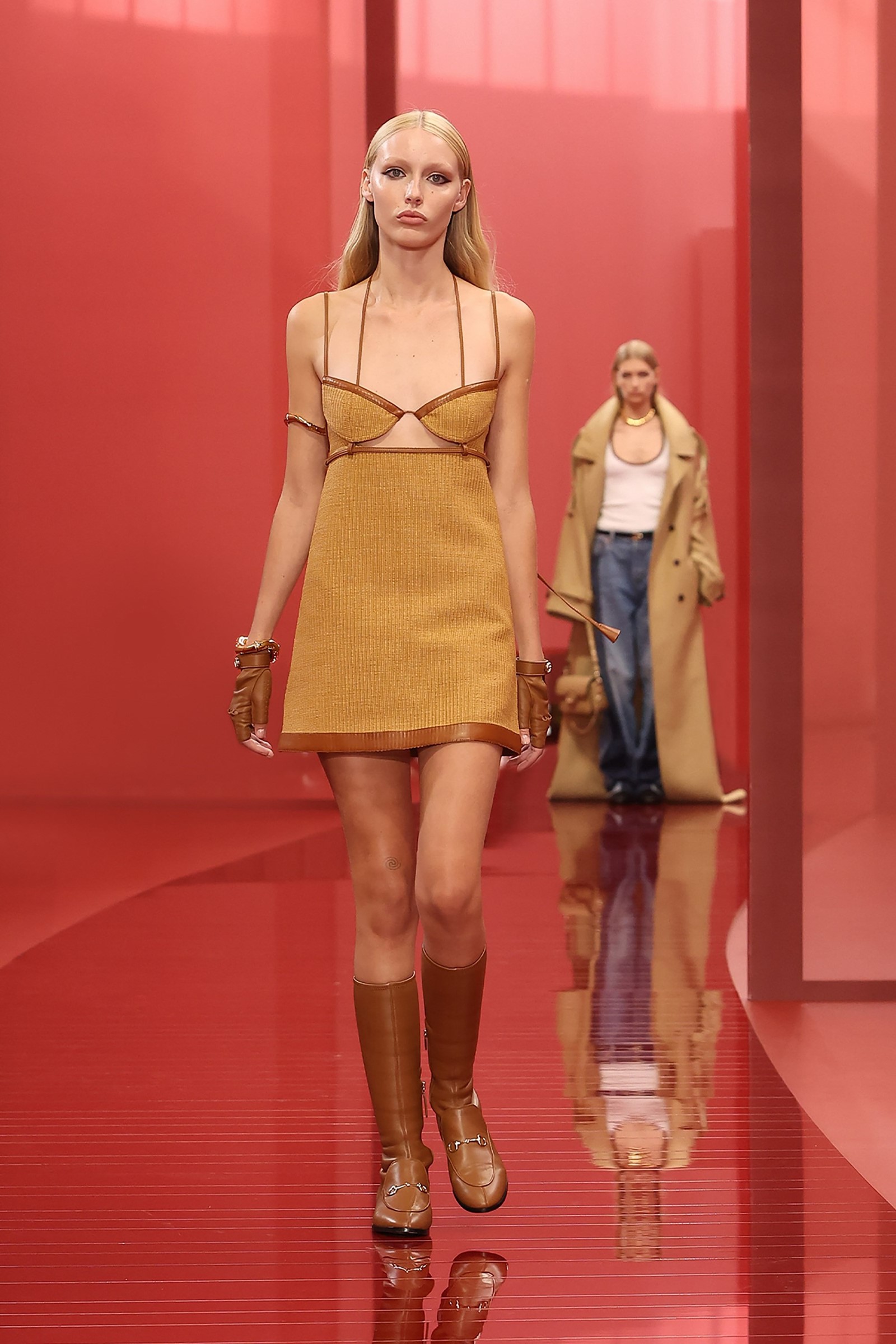
If De Sarno used his last collection to reaffirm his first womenswear offering for Gucci, this Spring/Summer 2025 show – already his sixth for the house, in just 12 months – roamed wider. His Ancora was there, of course, but De Sarno also examined Gucci’s greatest hits, its touchstones and milestones – which, of course, he hopes Ancora will, in future, be counted among. It amounted to a dissection of Gucci in theory, but in actuality felt like an exercise in direct design, these were clothes with immediate appeal, connected with the past, but not bogged down in it.
De Sarno titled the whole collection Casual Grandeur, after a quote describing Jackie Kennedy – a woman sufficiently connected with Gucci to have had a bag renamed after her. By ‘connected to’, I mean ‘indebted to’ – what we now know as the ‘Jackie’ was called the Constance from its invention in 1961 until 1964, when Kennedy wandered into the Gucci boutique on 5th Avenue and 58th Street in New York and apparently left with six of them. There was a city mood to neat A-line coats, structured suits, the crispness of dry wools with drawstring detailing. Gucci’s neat, boxy Bamboo handbag – originally from 1947, when post-war leather shortages necessitated the inventive use of bamboo as handle and clasp – was also given an extensive workout.
But it wasn’t all 60s redux. For example, not the little black dresses of De Sarno’s debut, but the long white dresses of 1996, namely of Tom Ford’s own third show as creative director of Gucci. That was staged as an ode to his own misspent youth at the legendary New York nightclub Studio 54, and the stand-out pieces were generally acknowledged to be a series of white viscose jersey column dresses, punctuated with cut-outs and pierced with bold gold belts, an homage to the work of Roy ‘Halston’ Frowick and his collaborator the jewellery designer Elsa Peretti. It proved a potent moment for the fashion history books – indeed, one Ford himself would revive in his final collection for the house eight years later. De Sarno was just a kid when those slinky looks came down the catwalk – then again, so was I, and they’re still etched in my mind’s eye. So this season, he paid homage to the homage in a series of dresses in jerseys and bias-cut crepes with golden bangles snagging the fabric against the models’ bodies. They weren’t reissues – they were too clever for that. But a pure white one harked right back to those glory days, and had the same kind of power.
The finale was another facet of Gucci entirely: a sequence of kimono-influenced coats with couture attitudes, in biscuit, black, Ancora red (of course) and sharp chartreuse double-G logo jacquards, shown with vests, jeans and bandannas. Gucci is cited in no less than 22,000 songs, many of them rap – and these pieces nodded to the 90s, 00s and the now in their combination of sumptuous, robe-like overcoats with beaten-up denims and skinny rib cotton tank tops. They truly exemplified a casual grandeur, and felt like nothing we’d seen from De Sarno before. Yet they were ultimately, unmistakably, Gucci. Maybe in 20-odd years, other designers will be riffing on them too.
